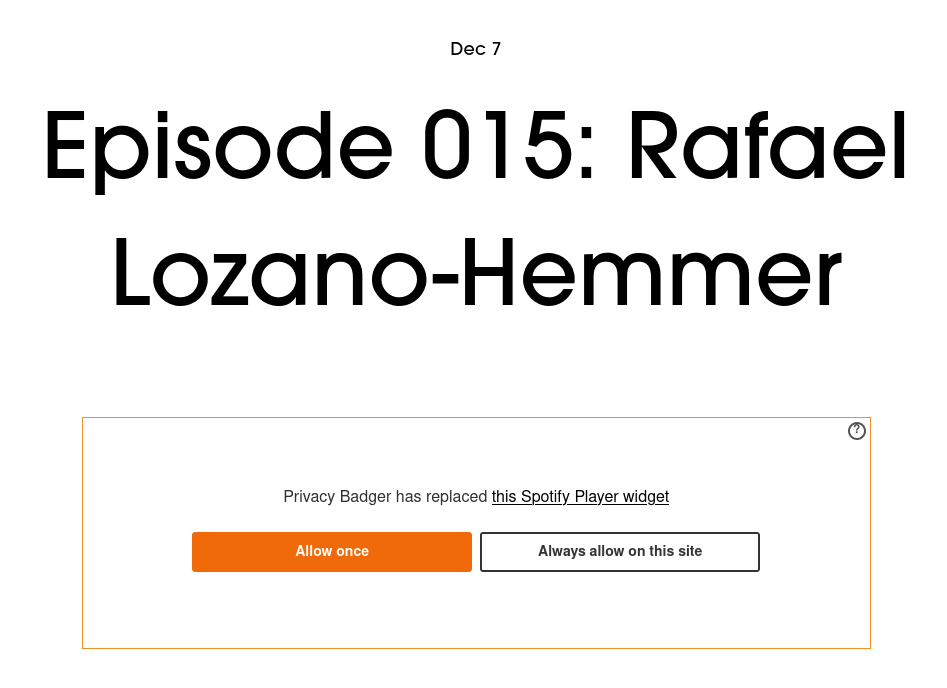Episode 15 of the Art and Obsolescence podcast (RSS) is an interview with Rafael Lozano-Hemmer, whose Pulse Topology was heard in Listening to Art 09.11

It’s a fascinating discussion about conservation of digital art.
As an example, in my show in 2015 in Mexico City, we had 43 artworks on view. You could either buy the catalog, which was, I don’t know, whatever 25 bucks or you could buy a USB stick for I think it was $10, which included all the source code and schematics for every single artwork so that if you really liked the piece. You could just make it yourself. I love this position, Ben, because I think that in digital worlds, we know that there is a certain abundance, right? There is this capability for perfect digital reproduction. And so instead of fighting against it, we need to make our work more viral. My strategy for conservation is if younger generations start using my code then they will know it in the future and because they’ll incorporate into their own work and then it’ll be easier for somebody in 20 years, time to look back at the code and say, oh, you know, I, I can fix this.
He and his team put their code on GitHub, which also holds Best Practices for Conservation of Media Art from an Artist’s Perspective:
Make global choices in your procurement. For example, choose gear that can function in a range of voltages 100-240V ideally with auto-switching circuitry; or if you are Canadian never use Robertson screws despite how great they are, as no one outside of our proud country has drill bits for this screw head.
Talk about warranty. You should let the collector know about whatever warranty there is on the individual components of the piece, for example a computer usually has a 1-year warranty. But you should under no circumstances guarantee that the work will function a given amount of time. You are not a corporation, you do not control the conditions of the exhibition or the handling of the piece after you depart. The spirit of giving the collector all schematics, software and code, plus the training, spare parts and manuals, is that you are now delegating conservation to his or her collection. When the collector is uncomfortable about the lack of warranty clarify the technical support you are willing to give.
 Miskatonic University Press
Miskatonic University Press